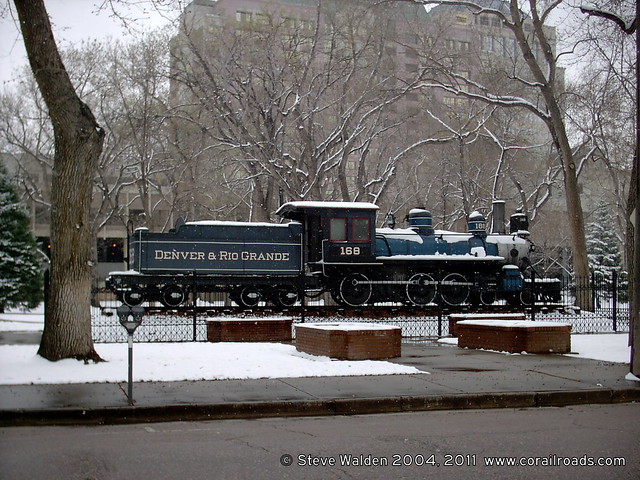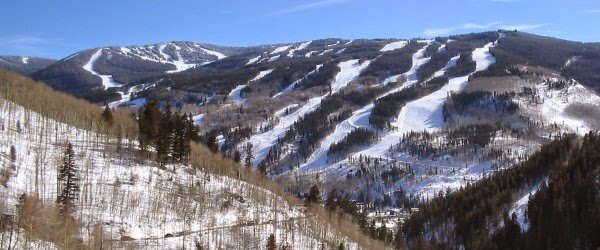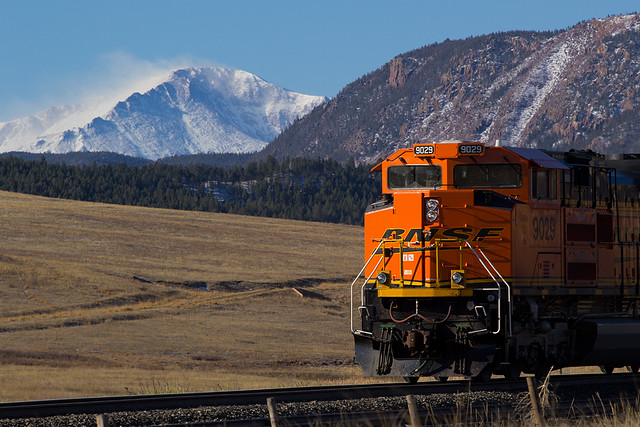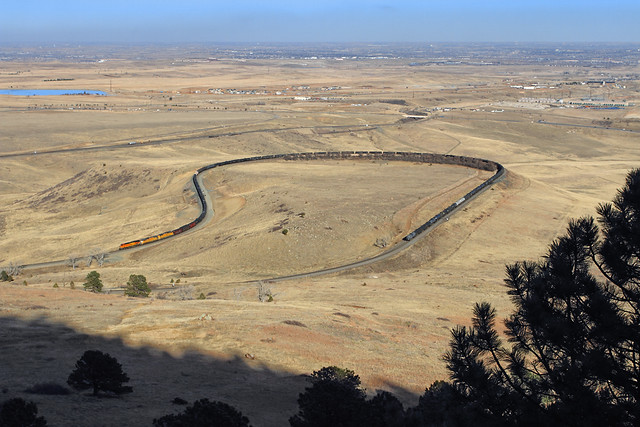3600’s. Mention that number series and those who follow the Denver and Rio Grande’s steam locomotive fleet will smile and fondly remember the 2-8-8-2 articulated giants, the world’s largest at their construction in 1927. Built by the American Locomotive Company, the first ten were class L131 numbered 3600 through 3609 and followed by class L132 numbered 3610 through 3619 built in 1930. 131,800 pounds of tractive effort, 63" diameter drive wheels, 26" x 32" cylinders and weighing in at 649,000 pounds. I remember being told that for every four scoops of coal into the firebox, one went straight up the smokestack.
Sadly all met with the scrapper's torch in 1955 and 1956, five in 1955, engines 3600, 3603, 3614, 3617 and 3618, the remainder in 1956 with none saved for posterity. Unfortunately, this was the same for all but one locomotive of the D&RG standard gauge steam fleet.
Sadly all met with the scrapper's torch in 1955 and 1956, five in 1955, engines 3600, 3603, 3614, 3617 and 3618, the remainder in 1956 with none saved for posterity. Unfortunately, this was the same for all but one locomotive of the D&RG standard gauge steam fleet.
Author Dave Straight met several engineers, hostlers and the like while out photographing the final days and hours of the great beasts. Here are a couple of anecdotes from the fellows he met as well as himself;
“A hoghead named Alvie Powell, brought the first 3600 into Phippsburg, Colorado approximately in 1947. Alvie was an engineer who worked over the hill in the D&SL Days. He was quite a character, and he liked the 3600’s.”
“The last two 3600's under steam were: the 3609 and the 3619. Ironically the last 2 numbered engines in each class. Sadly enough, the last day they operated, was Oct. 27th,1956. They left Tabernash that afternoon. Joe Preiss and Flory Iacovetto, engineer and fireman respectively. Both were D&SL employees. Joe was a veteran from the days on the line over Corona/Rollins Pass."
“About a week before their leaving Tabernash, A hostler let me up in the cab of the 3609."Just don't touch anything!" they told me. But I got to blow the whistle. I can't tell you how much of a charge I got out of that. Later on, we went over to a little diner across the highway. The cook had a little, black & white TV set on. It looked like a blizzard on Corona Pass! His rabbit ears antenna weren't much good. He started lamenting about those (censored) steam engines and how their steam generator "jacked up the reception." Plus the fact, some (censored) was blowing the whistle! Of course, needless to say I kept my mouth shut for a change. What a sight to see the 3609 pound out of Tabernash, tied to the tail of a Moffat Tunnel freight. ‘Twas quite a day.”
“Another character said he had a 3600 running at 75MPH, that’s right, 75MPH between Flat and Troublesome. If you’re not familiar with those names they are between Kremmling and Parshall along the Colorado River. I leave this one for you the reader to decide but…”
Dave’s friend, retired D&RGW employee Gerry Decker, relates in a letter to Dave about his father Dean who was a D&RGW conductor. Gerry says,
I don’t have too many 3600 stories. Dean was on the first one west with tonnage. He said the road foreman got off after a few tunnels and rode the caboose to Bond. He told Dean at Bond that he wouldn’t have ridden through another tunnel if they gave him what it cost new at the factory! He referred to it as ‘a miserable S.O.B!’ ... Frank Woodruff was on one west and they stopped someplace east of Bond. Don’t remember where. Frank went to the headend and the Hogger was passed out drunk. Frank told the fireman, who was promoted, to run the engine and he refused so Frank sent the head brakeman to the rear end and Frank ran the engine into Bond. He said, ‘That S.O.B., never thanked me for saving his job or even bought me a cup of coffee!’
Dean always remarked how bad they smoked. The company issued the crews some old WW1 gas masks and he said they were useless! The best they could do was keep a box of packing waste and a bucket of water in the cab. They would grab a wad of waste, dip it in the water, and cover their faces in it while going thru the tunnel. Dean also carried a small mirror with him to help pick cinders out of his eyes. He said he could get a cinder in his eye by just looking at a picture of a 3600. ... Dean said that there was a practice in helper service for other engines to be ahead of a 3600 because they put out too much smoke and heat that would about kill the crews on the smaller engine. He said they tried that at first but that didn’t last too long.”
Author Dave Straight’s attached photo of the 3600’s and a 3700 being towed to their demise brought forth his comment, “The sound of hissing air being sucked into and blown out of the cylinder cocks was a sad moment as I stood and watched them fade away.”
Editor's note: Dave and John both have my deep personal gratitude for their patience in letting me put this article together. Having to work with my errors and delays is something that few can work with and it speaks to their great fortitude and generosity. I look forward to writing about the 3600s and hopefully, I will be able to use their incredible photographs and collections in the future! - SRW, ed.◊
 |
| 3607 at the Pueblo Coaling Tower on Feb 12, 1956 Dave Straight Photo |
 |  |
| 3619 near Fraser 10-20 1956 Dave Straight | 3619 at Tabernash CO 10-20-1956 Dave Straight |
 |
| L 131 3609 at Tabernash Colorado Sept 30, 1956 Dave Straight |
 |
| 3612 at Winter Park CO Sept 30, 1956 Dave Straight Photo |
 |
| 3609 at Winter Park CO Robert LeMessena Sept 1956 DPL-WHD Photo |
 |
| 3619 South of Tabernash CO 10-20-1956 Dave Straight Photo |
 |
| 3600 at Mitchell Curves with Train 35 on May 31 1941 R.H. Kindig, DL Straight Collection |
 |
| 3609 West of Malta CO with Train 33 with 71 Cars 3-24-1940 R.H. Kindig, DL Straight Collection |
 |
| 3606 and 1510 South of Littleton CO with 107 Cars 12-1-1940 R.H. Kindig, Dave Straight Collection |
 |
| 3612 at Tabernash Colorado Ready for Helper Service Sept 30, 1956, Dave Straight Photo |
 |
| 3602 at the West Portal of Tennessee Pass 3-24-1940 R.H. Kindig Photo Dave Straight Collection |
"The sound of hissing air being sucked into and blown out of the cylinder cocks was a sad moment as I stood and watched them fade away."
Editor's note: Dave and John both have my deep personal gratitude for their patience in letting me put this article together. Having to work with my errors and delays is something that few can work with and it speaks to their great fortitude and generosity. I look forward to writing about the 3600s and hopefully, I will be able to use their incredible photographs and collections in the future! - SRW, ed.◊






.jpg)













